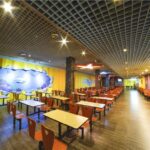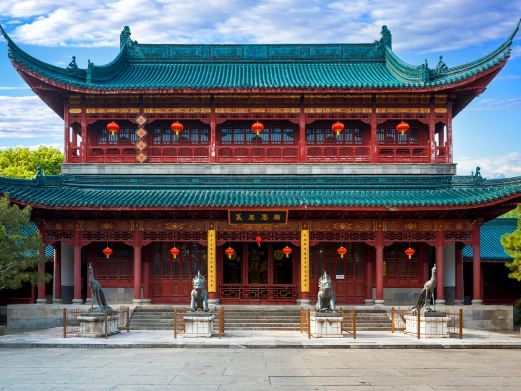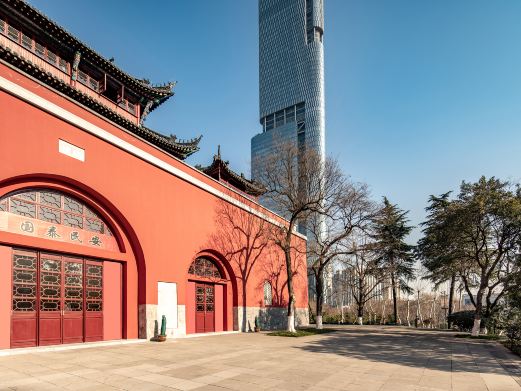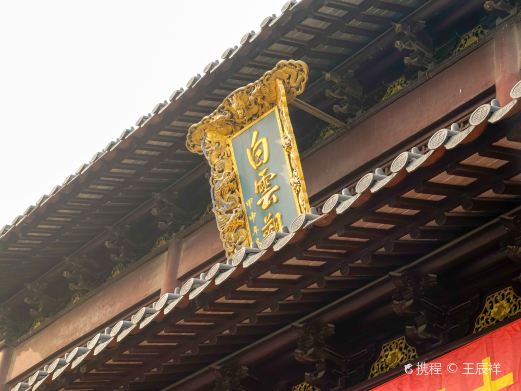The principle of ‘catching turtles in a jar’ and the 27 hidden soldier caves and other ancient military defense facilities have a special attraction for military enthusiasts. Climbing the city gate allows you to overlook the cityscape of Nanjing.
Origin of the name: In the Ming Dynasty, it was called Jubao Gate. It was built from 1369 to 1375 (the second to eighth year of Hongwu in the Ming Dynasty) and was renamed in 1927. City wall: The height of the city wall is about 21 meters. The north-south and east-west widths of the barbican are roughly 120 meters. The entire building is made of bricks and stones. A mixture of tung oil, lime, and glutinous rice juice is used as mortar and is stacked layer by layer, extremely坚固. On the side of each brick and stone are the government offices and dates of the prefectures and counties where the brick makers are located. Barbican: It consists of three barbicans and is connected by four arched gates. Each arched gate has a ‘thousand-catty gate’ that can be raised and lowered and double wooden doors, but now all have been destroyed by war. In those days, when enemy soldiers entered the city gate, the ‘thousand-catty gate’ inside the arched gate quickly descended, cutting off the enemy’s retreat. The defending ambush troops emerged from all directions and annihilated the enemy respectively, just like closing the door to beat the dog and catching turtles in a jar. City gate: The first city gate was originally divided into three layers. The upper layer originally had a triple-eaved Xieshan-style watchtower with a wooden structure, which was repeatedly built and destroyed and no longer exists. The middle layer of the city gate is of brick and stone structure. Seven hidden soldier caves are built side by side facing north. In the middle of the lower layer, an arched gate is built to lead to the barbican. On the left and right sides, three hidden soldier caves are built respectively. Hidden soldier caves: Seven hidden soldier caves are built on each side of the east and west of the barbican. There are a total of 27 hidden soldier caves in the entire barbican, which can hide 3,000 soldiers and 10,000 piculs of grain. Its ‘hidden soldier caves’ are rare and unique buildings among ancient city gates in China and play a very important role in material storage and ambush of troops in ancient wars. Opening hours: Open all year round from 08:30 to 22:00. Preferential policies: Children: Minors under 18 years old (excluding) (accompanied by a ticket-purchasing guardian), free. Elderly: People aged 70 and above, free with senior citizen card or ID card. Elderly people aged 60 to 69, half price with ID card. Military personnel: Free with military officer card. Disabled people: Free with disability certificate. Retired personnel: Free with valid retired certificate. Students: Full-time college students, half price with student ID. Service facilities: Parking lot: [Parking lot of Zhonghua Gate Barbican]. Reference price: ¥6/hour. Address: Zhonghua Gate Barbican scenic area, Qinhuai District, Nanjing. Parking spaces: 100. WIFI: Account: i-NanJing-Free. Password: Verified login. Coverage: Full coverage. Luggage storage: Only provides small item storage service. Scenic area interpretation: The scenic area provides time-limited interpretation services, free of charge. Transportation within the park: Reference price: Charged. Toilets: There are multiple toilets in the scenic area. You can choose to use them according to the guide signs.Convenience Stores: There are several convenience stores within the scenic area, located at the bookstore in the middle of the lower level of the scenic spot. They offer beverages and snacks, and accept Alipay and WeChat Pay for transactions.









